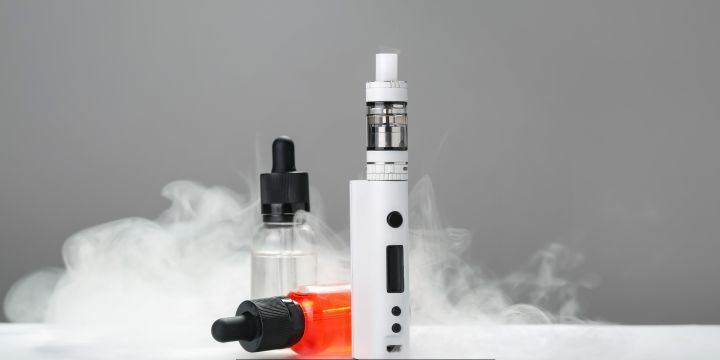Table of Contents:
- Understanding the Ingredients in Vape Products
- Scientific Findings on Vaping and Cancer
- Vaping vs. Traditional Smoking: Which is Riskier?
- Personal Stories: The Real-life Impact
- Making Informed Health Choices
- How Regulations are Shaping the Future of Vaping
- What’s Next in Vaping Research?
As smoking rates decline, vaping has rapidly emerged as a popular alternative that many see as modern and less harmful. With sleek designs and flavored options, these devices have reshaped the nicotine landscape. Amidst the growing popularity of vaping, a pressing question arises: does vaping cause cancer? The allure of vaping, particularly among the younger generation, stems from its perception as a safer alternative to smoking. Yet, as vaping devices fill the air with enticing clouds, researchers are delving into the deeper implications of this trend, striving to understand the full scope of its potential consequences, especially regarding long-term cancer risk. This inquiry not only reflects scientific curiosity but also an urgent public health concern, urging a reevaluation of vaping as just a trend.
Investigating the health implications of vaping necessitates an in-depth look at both the tangible and intangible elements involved—delving into the ingredients in the liquids used, the fabric of scientific research assessing potential risks, and the spheres of regulatory efforts designed to capture and mitigate these hidden hazards. This complex mosaic is stitched together through diligent research and regulatory initiatives, aiming to shed light on vaping’s implications on health.
Understanding the Ingredients in Vape Products
The core ingredients in many vape products, including nicotine, propylene glycol, vegetable glycerin, and flavored compounds, are essentially harmless when ingested as food additives. When heated to produce vapor, these ingredients can change chemically, potentially forming new compounds. For instance, flavor additives that seem benign can become hazardous when inhaled regularly. These transformations raise concerns as researchers examine their interactions with lung tissue over time, particularly considering increased exposure frequency among regular users. Understanding the dynamics of these changes is vital for evaluating vaping’s risk profile accurately.
Scientific Findings on Vaping and Cancer
Various studies investigating vaping and cancer risk have started to outline the potential hazards associated with e-cigarette use. Some findings have traced a link to carcinogenic compounds in the vapor, similar yet less concentrated than those found in conventional cigarettes. The scientific community acknowledges that although vaping likely presents fewer risks than traditional smoking, this doesn’t equate to it being risk-free. It’s crucial to examine these findings in context, though, understanding how levels of exposure and individual health factors play a role. For a more thorough look into these studies, the American Cancer Society sheds light on the research developments and ongoing debate surrounding these concerns. As newer studies emerge, they promise to refine our comprehension of vaping’s potential effects on cancer development.
Vaping vs. Traditional Smoking: Which is Riskier?
While traditional smoking involves inhaling tar and thousands of harmful chemicals due to tobacco combustion, vaping avoids many of these components. However, the perception that vaping is entirely safe is misleading. Limited long-term data means that the comprehensive health outcomes associated with vaping remain uncertain. While vaping doesn’t expose users to tar, the inhalation of potentially altered and harmful chemicals over time demands careful consideration. As vaping lacks decades of research that traditional smoking has undergone, discussions comparing it to conventional smoking often highlight knowledge gaps, propelling the need for continual scientific exploration.
Personal Stories: The Real-life Impact
Vaping impacts people in different ways, resulting in a diverse range of personal accounts. While some individuals transitioning from traditional smoking to vaping report improved breathing and reduced respiratory symptoms, others still experience negative health effects. For instance, some users have documented lasting respiratory issues or dependence on nicotine from prolonged exposure from vaping. Sharing these personal stories provides a human aspect to supplement scientific data, enriching our understanding of vaping’s real-life impacts beyond laboratory statistics. It emphasizes the importance of acknowledging vaping’s varied effects on individual health, fostering an atmosphere of empathy and open dialogue.
Making Informed Health Choices
Understanding the potential risks of vaping allows individuals to make more informed health decisions. Those considering quitting vaping can benefit from consulting healthcare professionals for guidance and support in finding suitable cessation programs. Health practitioners may recommend alternative approaches, such as behavioral therapy or nicotine replacement therapies, tailored to individual needs. Developing strategies to adopt healthier lifestyle practices not only mitigates cancer risks but empowers individuals to prioritize wellbeing through informed choices. Emphasizing education and awareness can significantly impact public health by equipping individuals with the knowledge needed to navigate their choices responsibly.
How Regulations are Shaping the Future of Vaping
Regulations aimed at managing vaping products seek to shield consumers from potential health risks by mandating stringent guidelines on product labeling, advertising restrictions, and limiting youth access. These regulations are designed to ensure transparency, holding manufacturers accountable for disclosing accurate product information. As regulatory frameworks evolve in response to new research findings, they aim to safeguard public health by ensuring the information about the risks associated with vaping is accessible and accurate. This regulatory vigilance reflects a growing commitment to public safety, recognizing the dynamic environmental landscape in vaping that requires adaptive measures to mitigate health risks.
What’s Next in Vaping Research?
The landscape of vaping research is dynamic, with future studies set to delve deeper into the long-term implications of use and any links to chronic health conditions like cancer. Ongoing investigations will likely focus on understanding vaping’s comprehensive impact over time, exploring the interplay between ingredient concentrations and their biological effects. Engaging entities, such as universities and public health organizations including the National Institutes of Health, remains imperative to enhance the breadth and depth of research in this field. Empowering stakeholders with evidence-based data will inform policies that protect the public while encouraging more nuanced perspectives on vaping’s risks, ultimately steering future research directions.



